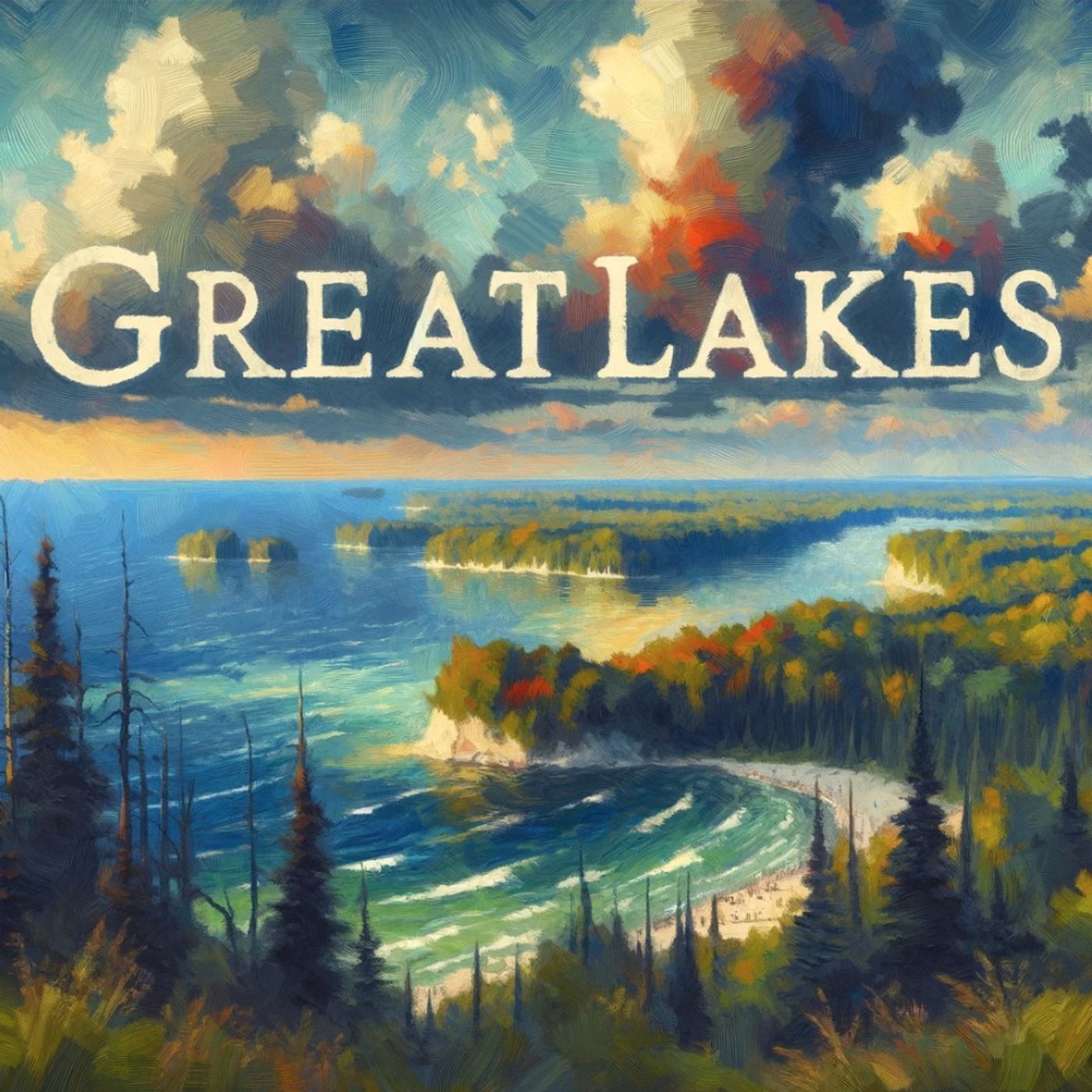
The Great Lakes - North America's Freshwater Inland Seas

Great Lakes
Deep Dive
What percentage of the world's surface freshwater is contained in the Great Lakes?
The Great Lakes contain 21% of the world's surface freshwater.
How did the Great Lakes form?
The Great Lakes formed during the last glacial period around 10,000 years ago, when massive glaciers scoured the landscape, carving out basins that later filled with meltwater.
What is the ecological significance of Lake Superior?
Lake Superior supports a relatively simple ecosystem with cold oligotrophic waters, hosting 79 species of fish, including lake trout and whitefish. It also serves as a habitat for migratory birds and is the largest freshwater lake by surface area in the world.
What are the major environmental threats facing Lake Erie?
Lake Erie faces severe environmental threats, including harmful algal blooms, invasive species, habitat loss, and pollution, despite being the most biologically productive Great Lake.
How do the Great Lakes influence regional climates?
The Great Lakes moderate regional climates by releasing heat in autumn and early winter, creating milder conditions along shorelines. In late winter and spring, they retain cold temperatures longer, leading to lake-effect snow in areas like eastern Lake Michigan and Lake Erie.
What role did the Great Lakes play in early European exploration and settlement?
The Great Lakes served as a gateway for European exploration and settlement, with French explorers like Samuel de Champlain charting the region in the 1600s. The lakes facilitated trade, particularly in furs, and later became vital for industrialization and transportation.
What are some of the invasive species affecting the Great Lakes?
Invasive species in the Great Lakes include zebra mussels, quagga mussels, round gobies, sea lamprey, and alewife, which have disrupted native ecosystems and food chains.
How did the Great Lakes contribute to the industrialization of North America?
The Great Lakes provided key transportation networks and resources, such as iron ore and timber, which fueled industrialization. Cities like Chicago and Detroit grew as manufacturing hubs, and the lakes facilitated the movement of goods via canals and shipping routes.
What is the significance of Lake Ontario in the Great Lakes system?
Lake Ontario is the easternmost and smallest by surface area among the Great Lakes. It connects the Great Lakes to the Atlantic Ocean via the St. Lawrence River, playing a crucial role in hydrology and global maritime trade.
What conservation efforts are being made to protect the Great Lakes?
Conservation efforts include addressing pollution, restoring habitats, controlling invasive species, and improving water quality through international, national, and local initiatives to ensure sustainable use of these vital freshwater resources.
- Formation during the Pleistocene Epoch
- Glacial erosion and meltwater flooding
- Shifting shorelines and drainage events
- Current geography established 4,000-1,500 years ago
Shownotes Transcript
Spanning over 750 miles across eastern North America, the Great Lakes are a chain of immense inland freshwater seas that have deeply shaped the environment, economies, and cultures of midcontinental regions in the United States and Canada. This expansive article explores the geographical significance and natural history of the Great Lakes system, tracing their origins from massive glaciers of the last Ice Age to modern day influences on regional climate, diverse ecosystems, and natural resource utilization. Delving into early Native American lifeways, European exploration and the colonial fur trade around the lakes, the piece also highlights the pivotal role of Great Lakes transportation networks and industry in accelerating settlement and urbanization across the Midwest and Ontario. More than a vital commercial crossroads, this vast watershed remains an iconic natural wonder at the heart of the North American continent.